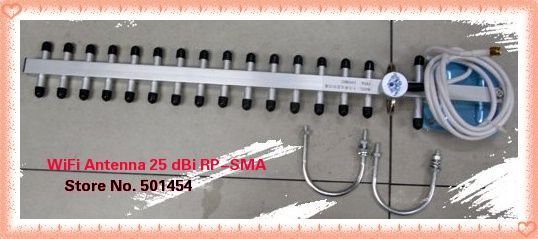A Yagi-Uda antenna, commonly known simply as a Yagi antenna, is a directional antenna consisting of multiple parallel dipole elements in a line, usually made of metal rods. Yagi-Uda type antennas consists of a single driven element connected to the transmitter or receiver with a transmission line, and additional parasitic elements: a so-called reflector and one or more directors.
The reflector element is slightly longer than the driven dipole, whereas the directors are a little shorter. This design achieves a very substantial increase in the antenna's directionality and gain compared to a simple dipole.
Also called a "beam antenna", the Yagi is very widely used as a high-gain antenna on the HF, VHF and UHF bands. It has moderate gain which depends on the number of elements used, typically limited to about 17 dBi, linear polarization, unidirectional (end-fire) beam pattern with high front-to-back ratioof up to 20 db. and is lightweight, inexpensive and simple to construct. The bandwidth of a Yagi antenna, the frequency range over which it has high gain, is narrow, a few percent of the center frequency, and decreases with increasing gain, so it is often used in fixed-frequency applications. The largest and most well-known use is as rooftop terrestrial television antennas, but it is also used for point-to-point fixed communication links, in radar antennas, and for long distance shortwave communication by shortwave broadcasting stations and radio amateurs.

